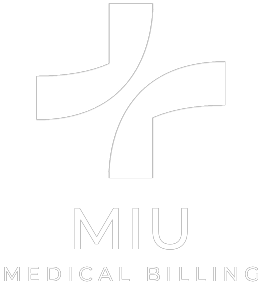Introduction
Hospital revenue cycle management occupies a central place in the financial operations of the healthcare institution. It involves proper revenue cycle management so that the overall claims are paid on time and there is less denial of the claims. Yet, many factors make the process rather challenging for healthcare providers. Below, we delve into critical challenges affecting hospitals’ revenue cycle management and how one can fix them to improve their performance and revenues.
Patient Registration and Data Collection

One of the primary challenges in hospital revenue cycle management occurs at the very beginning of the patient journey: the initial process of registration and data collection. It is true that any billing and reimbursement starts with patients’ information and, therefore, must be accurate. Some of the challenges faced in terms of claims include receiving animal data that is incomplete or inaccurate, and this causes a lot of issues like claim denial and slow payment, among others. As a result of this challenge, hospital revenue cycle management teams should ensure they have sound patient registration systems. Such systems can be automatic validators that work with the data and staff’s training regarding data input or patients who have access to input information by themselves through Patient Portals. Regarding data accuracy, it is essential to start from the point of view that avoiding downstream problems is far more advantageous for a hospital’s revenue cycle.
Insurance Verification and Eligibility
Insurance verification is another reasonably complex task in the revenue cycle management of hospitals. Lack of proper insurance identification and a patient’s eligibility infringes their rights by denying all their claims. This is because one has to deal with insurance policies, changes in policy details, and insurance acceptances and rejections. To counter this challenge, hospital revenue cycle management departments should embrace real-time eligibility verification. These solutions can quickly determine patients’ insurance, coverage, and the co-paying amount. Besides, carrying out the pre-authorization process on the part of non-emergy medical procedures can also serve as a means of avoiding denials. When a hospital is proactive on insurance verification, the hospital minimizes the number of denied claims and maximizes the hospital’s cash inflow.
Coding and Documentation Accuracy
Compliance with medical coding and documentation standards can offer a foundation in hospital revenue cycle management systems. Yet, maintaining compliance with the codes that change more frequently than new fashion trends and managing the documentation work can be problematic for healthcare providers. Mis-coding or lack of documentation will result in claim denial, audit, or even risk of compliance concern. To counter this problem, it is pertinent for the hospitals to provide continuous education and training to the coders. It is recommended that the audits of the coding practices be performed systematically from time to time to reveal potential issues. Also, augmenting the coding process through a computer-assisted coding (CAC) system increases the accuracy and efficiency of coding. It must be noted that the coding done together with documentation makes it easier for hospital revenue cycle management teams to overcome denials and achieve superior reimbursement rates.
Claim Submission and Follow-up
The claim submission process is yet another critical area in the revenue cycle management of hospitals, but due to several factors, it may experience[some] delays and errors. A hospital faces many challenges, such as dealing with multiple payers with unique requirements, filing deadlines, and claims format. The hospital revenue cycle management departments must incorporate automated claim scrubbing systems into their operations to speed up this process. The follow-up process for submitted claims is also crucial to establish, as well as the follow-up number of days to the carrier. The systematic strategy for monitoring the status of claims, responding to end-payer queries, and handling denial can significantly boost reimbursement and cut down the days in accounts receivables.
Managing Denials and Appeals
Payment rejections are another significant problematic aspect in the hospital revenue cycle, resulting in cash flow issues for the hospital and the extra effort needed to address them. High denial rates are more often experienced in hospitals because of various reasons, such as improper coding, insufficient medical necessity, and inadequate documentation, among others. To solve this problem, the hospital revenue cycle management teams should implement a proactive denial management strategy. This approach entails an assessment of denial patterns to find the source of the problem and come up with the proper measures to counter the issues, as well as setting up a team that deals with denials. By featuring the above approach in handling denials and appealing for reverses, the hospitals will be paid the lost revenue and avert future denials.
Patient Collections and Financial Counseling

Hospitals face increasing challenges in collecting patient payments as patient financial responsibility grows. High-deductible health plans and rising out-of-pocket costs have made it more difficult for patients to meet their financial obligations. To address this challenge, hospital revenue cycle management departments should focus on improving patient financial experience. This can include implementing transparent pricing policies, offering flexible payment plans, and providing financial counseling services. Utilizing patient estimation tools can help set clear expectations about costs before treatment. Hospitals can improve collection rates and patient satisfaction by engaging patients early in the financial process and offering supportive solutions.
Technology Integration and Data Management
In the era of digital healthcare, integrating various technology systems and managing vast amounts of data present significant challenges in hospital revenue cycle management. Hospitals often struggle with outdated or disconnected systems that hinder efficient information flow and decision-making. To overcome this hurdle, healthcare providers should invest in comprehensive revenue cycle management solutions that integrate seamlessly with electronic health records (EHR) and other hospital systems. Implementing data analytics tools can help hospital revenue cycle management teams identify trends, forecast revenue, and make data-driven decisions.
Conclusion
Hospital revenue cycle management is a complex and critical process directly impacting a healthcare institution’s financial health. Hospitals can significantly improve their revenue cycle performance by addressing common challenges such as patient registration errors, insurance verification issues, coding inaccuracies, and claim denials. Implementing robust technology solutions, focusing on staff training, and adopting patient-centric financial policies are vital strategies to overcome these hurdles. As the healthcare landscape continues to evolve, hospitals must remain adaptable and proactive in their approach to revenue cycle management. By continuously refining their processes and embracing innovative solutions, healthcare providers can ensure financial stability while delivering high-quality patient care.




